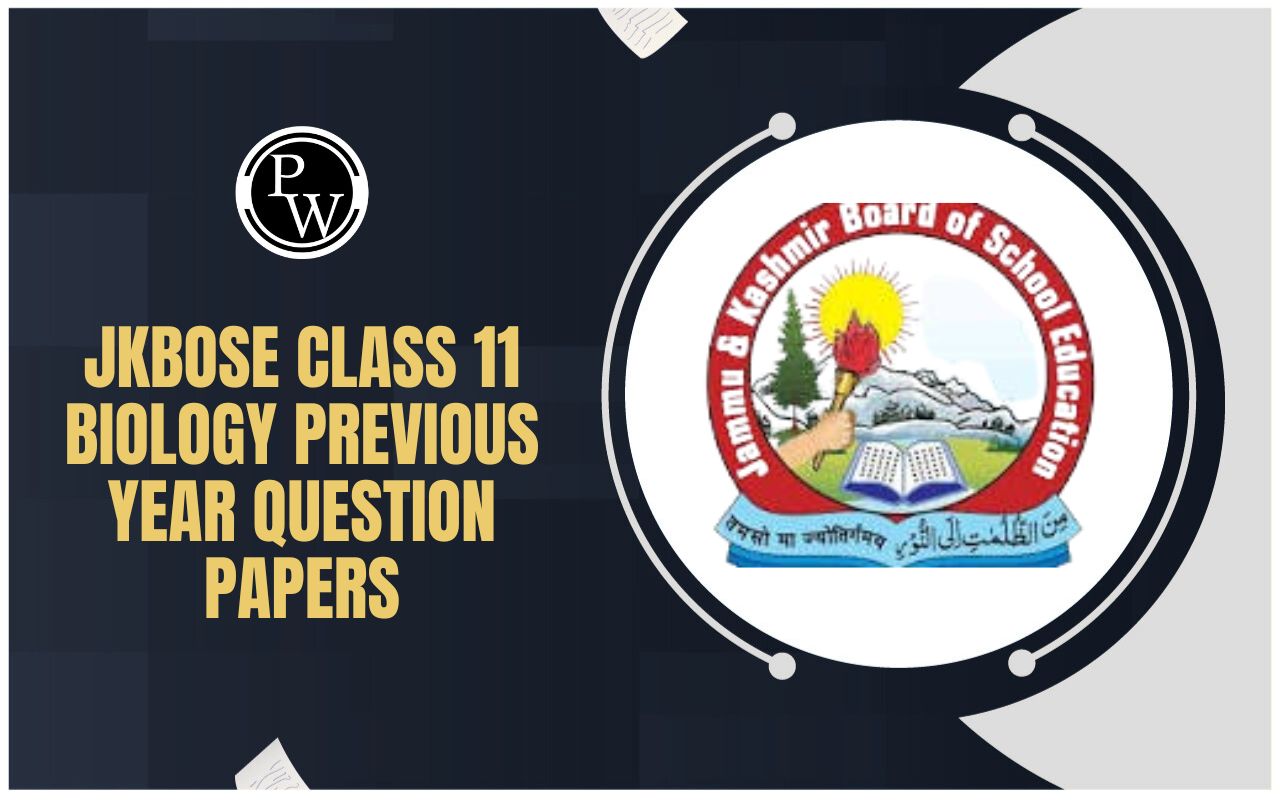
Class 9 Science under the Jammu and Kashmir Board of School Education (JKBOSE) provides a solid foundation for the student’s understanding of the natural world and prepares them for more advanced topics in subsequent years.
The curriculum is divided into three main branches of science: Physics, Chemistry, and Life Science, each playing a crucial role in understanding the fundamentals of nature and how various phenomena occur. To perform well in the exams and gain a comprehensive understanding, it is essential to know the detailed syllabus and plan accordingly.
JKBOSE Class 9 Science Syllabus 2025 Overview
The Jammu and Kashmir Board of School Education (JKBOSE) conducts exams for secondary and higher secondary students in the Jammu and Kashmir region. The Class 9 exams for 2025 will be held as part of the annual examination cycle.
|
JKBOSE Class 9 Science Syllabus 2025 Overview |
|
|
Exam Details |
Information |
|
Board Name |
Jammu and Kashmir Board of School Education (JKBOSE) |
|
Abbreviation |
JKBOSE |
|
Exam Frequency |
Once a year |
|
Mode of Examination |
Offline (Pen and Paper Mode) |
|
Class |
Class 9 |
|
Expected Exam Dates (Summer Zone) |
April 2025 |
|
Expected Exam Dates (Winter Zone) |
Dates to be announced in the coming months |
|
Official Website for Updates |
www.jkbose.nic.in |
JKBOSE Class 9 Science Syllabus 2025
The Class 9 Science syllabus is divided into three main subjects: Physics, Chemistry, and Life Science. Each subject is further divided into two terms, with specific chapters outlined for each term.
Term 1: Focus on Building Fundamentals
The first term of Class 9 Science includes the foundational topics in Physics, Chemistry, and Life Science. The syllabus introduces students to concepts that are not only crucial for Class 9 exams but also for future scientific learning.
Science - I (Physics)
-
Motion
-
This chapter explains the concept of motion, types of motion (uniform, non-uniform), and the various physical quantities involved in motion, such as distance, speed, velocity, and acceleration.
-
Students also learn about graphical representation of motion and equations of motion.
-
Force and Laws of Motion
-
The second chapter delves into the concept of force, its types, and its effects.
-
Newton’s Laws of Motion are explained in detail, covering the relationship between force, mass, and acceleration.
-
This chapter lays the groundwork for understanding how objects move in different situations.
-
Work, Energy, and Power
-
In this chapter, students learn about the concept of work done when a force acts on an object.
-
The chapter also introduces energy, its forms (kinetic, potential), and the law of conservation of energy.
-
Power is explained as the rate at which work is done, and calculations related to work, energy, and power are also included.
Science - I (Chemistry)
-
Matter in Our Surroundings
-
This chapter explains the basic concept of matter, its states (solid, liquid, gas), and their properties.
-
The physical changes and characteristics of each state of matter are explained.
-
Is Matter Around Us Pure?
-
Students learn about the purity of substances and the different methods to separate components from mixtures.
-
This chapter introduces the idea of homogeneous and heterogeneous mixtures, solutions, and colloids.
Science – II (Life Science)
-
The Fundamental Unit of Life
-
This chapter introduces the cell, the basic structural and functional unit of life.
-
It covers the types of cells (prokaryotic and eukaryotic), their structure, and the function of cell organelles.
-
Tissues
-
Students study different types of plant and animal tissues and their functions.
-
The chapter focuses on meristematic and permanent tissues in plants and the types of animal tissues such as epithelial, connective, muscular, and nervous tissues.
-
Diversity in Living Organisms
-
This chapter focuses on the classification of living organisms based on their characteristics and differences.
-
The taxonomy system of classification, kingdoms of life, and the diversity in the plant and animal kingdoms are discussed.
Term 2: Expanding Concepts and Applications
In Term 2, the syllabus shifts towards exploring more specific concepts in each branch of science. It also covers topics that build upon what students have learned in Term 1 and prepares them for more advanced studies.
Science - I (Physics)
-
Gravitation
-
This chapter focuses on the concept of gravity, gravitational force, and its effects.
-
It introduces students to concepts such as mass, weight, and the universal law of gravitation formulated by Sir Isaac Newton.
-
Students also learn about the free fall and acceleration due to gravity.
-
Floatation
-
The chapter explains the principle of buoyancy and the conditions under which objects float or sink in fluids.
-
Archimedes’ Principle, which relates to the upward buoyant force exerted by a fluid, is also discussed.
-
Sound
-
In this chapter, students explore the nature of sound, how it is produced, transmitted, and received.
-
The concepts of frequency, amplitude, and pitch are discussed, along with the speed of sound in different media.
-
The chapter also covers the reflection and absorption of sound, as well as the applications of sound waves.
Science - I (Chemistry)
-
Atoms and Molecules
-
This chapter introduces the fundamental concepts of atoms and molecules, atomic theory, and chemical reactions.
-
Students learn about the structure of atoms, atomic mass, and the mole concept, which forms the foundation for understanding chemical formulas.
-
Structure and Properties of Molecules
-
This chapter deals with the structure of molecules, covalent and ionic bonds, and the properties of different molecules.
-
Students understand how molecules are formed and how their properties determine their behavior in different chemical reactions.
Science – II (Life Science)
-
Why Do We Fall Ill?
-
This chapter explains the causes of diseases, their symptoms, and prevention.
-
It introduces students to infectious and non-infectious diseases, pathogens, and the immune system.
-
Natural Resources
-
Students explore the concept of natural resources, their types (renewable and non-renewable), and their importance.
-
The chapter also discusses the depletion of natural resources and the need for conservation.
-
Improvement in Food Resources
-
This chapter covers the agricultural practices that are used to improve food resources.
-
Students learn about crop production, animal husbandry, and sustainable agricultural practices.
-
Prevention of Drug Abuse and Sexually Transmitted Diseases
-
In this chapter, students are educated about the harmful effects of drug abuse and the importance of preventing sexually transmitted diseases (STDs).
-
It emphasizes public health and personal responsibility in maintaining health.
JKBOSE Class 9 Science Exam Blueprint (Physics, Chemistry, and Life Science)
The JKBOSE Class 9 Science exam is structured into three major sections—Physics, Chemistry, and Life Science. Each subject is assigned 50 marks for theory and a certain weightage for practical exams, bringing the total marks to 200 for the full Science assessment. Below is the detailed exam blueprint that will guide students on how the marks are distributed for each subject, both for theory and practicals.
|
Section |
Marks (Theory) |
Marks (Practical) |
Total Marks |
|
Physics |
50 |
18 |
68 |
|
Chemistry |
50 |
16 |
66 |
|
Life Science |
50 |
16 |
66 |
|
Total |
150 |
50 |
200 |
Preparation Tips for JKBOSE Class 9 Science
The JKBOSE Class 9 Science exam is an important milestone in your academic journey, and preparing well can help you achieve great results. Here are some effective preparation tips to help you succeed in your Physics, Chemistry, and Life Science (Biology) subjects.
1. Understand the Syllabus Thoroughly
Before starting your preparation, ensure you are familiar with the JKBOSE Class 9 Science syllabus for 2025. Knowing the chapters, topics, and marking scheme will help you prioritize your study material and manage your time effectively.
-
Break down the syllabus into smaller sections.
-
Identify important chapters based on their weightage in the exam.
-
Focus on both Theory and Practical components.
2. Create a Timetable and Stick to It
A well-structured timetable is essential to manage your study time effectively. Allocate sufficient time for each subject and make sure to include time for revision and practice.
-
Allocate time for each subject: Devote more time to subjects or chapters you find challenging.
-
Balance theory and practicals: Give time for both reading theory and practicing experiments.
-
Include breaks: Short breaks in between study sessions can help you stay focused.
3. Focus on Understanding Concepts, Not Memorization
Science subjects require conceptual understanding rather than rote memorization. Try to understand the principles behind each concept in Physics, Chemistry, and Life Science.
-
In Physics, focus on the laws of motion, energy, gravitation, and sound concepts.
-
For Chemistry, understand the structure of atoms, chemical reactions, and the properties of matter.
-
In Life Science, focus on cell structure, diseases, and human biology.
4. Practice Regularly with Previous Year Papers
Solving previous year question papers helps you understand the exam pattern, types of questions, and time management.
-
Practice sample papers and mock tests regularly.
-
Try to complete the papers within the time limit to improve speed.
-
Analyze the results to identify weak areas.
5. Don’t Skip Practical Work
Practical exams play a significant role in the JKBOSE Class 9 Science exam. Understand the experiments and the procedures involved, as you might be asked to perform or explain them during the practical exam.
-
Revise important experiments and their concepts.
-
Make sure you know how to write practical observations and conclusions.
-
Practice drawing diagrams like cells, tissues, or experimental setups.
6. Use Diagrams to Enhance Your Understanding
Many chapters in Life Science and Physics involve diagrams. Practice drawing neat and labeled diagrams.
-
In Physics, diagrams such as force diagrams and ray diagrams in optics can help visualize concepts.
-
In Biology, practice drawing cells, plant tissues, human digestive system, etc.
Proper labeling and understanding the relevance of each part of the diagram are important.
JKBOSE Class 9 Science Syllabus 2025 FAQs
Is practical work important in the JKBOSE Class 9 Science syllabus?
How important is the Life Science section in the JKBOSE Class 9 Science syllabus?
What is the duration of the JKBOSE Class 9 Science exam?
What should I do if I miss an exam?










